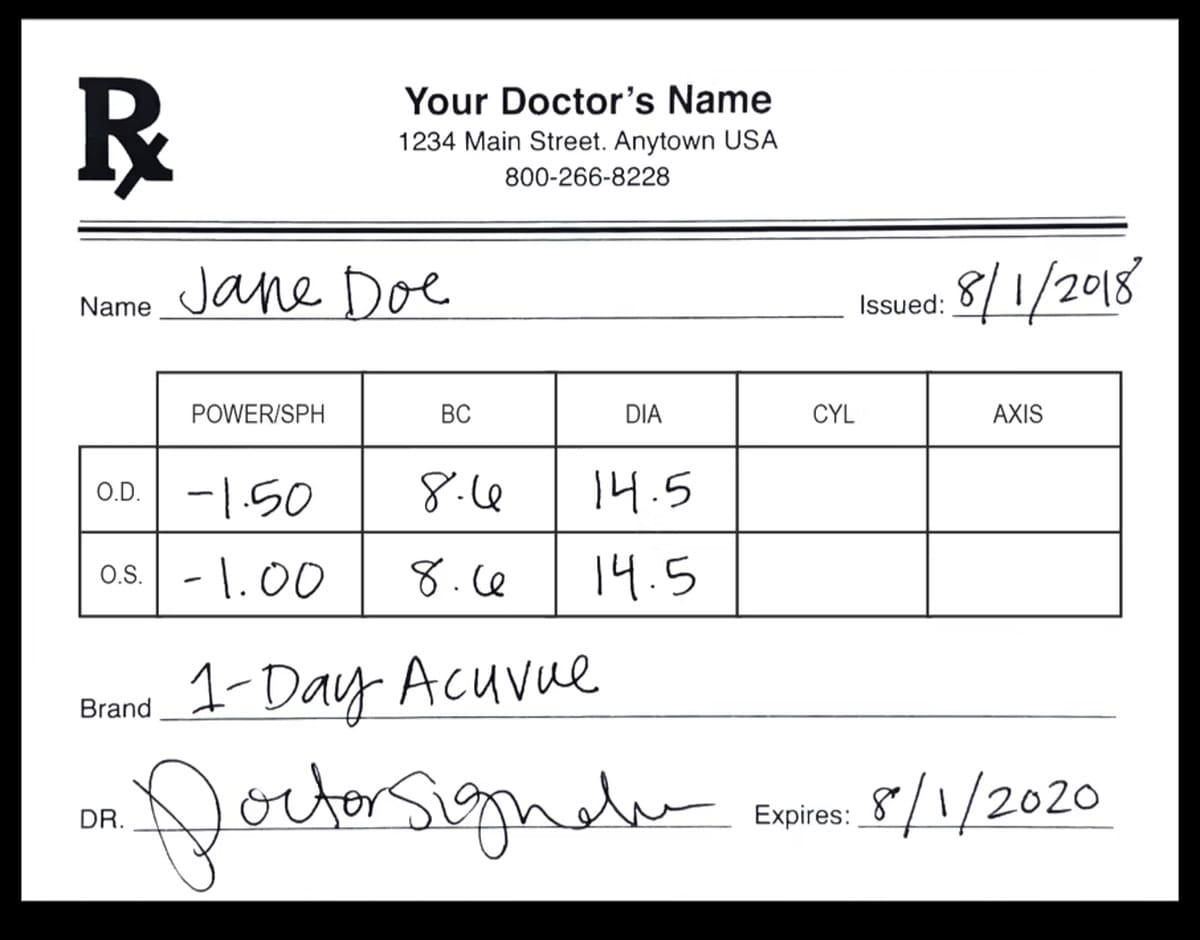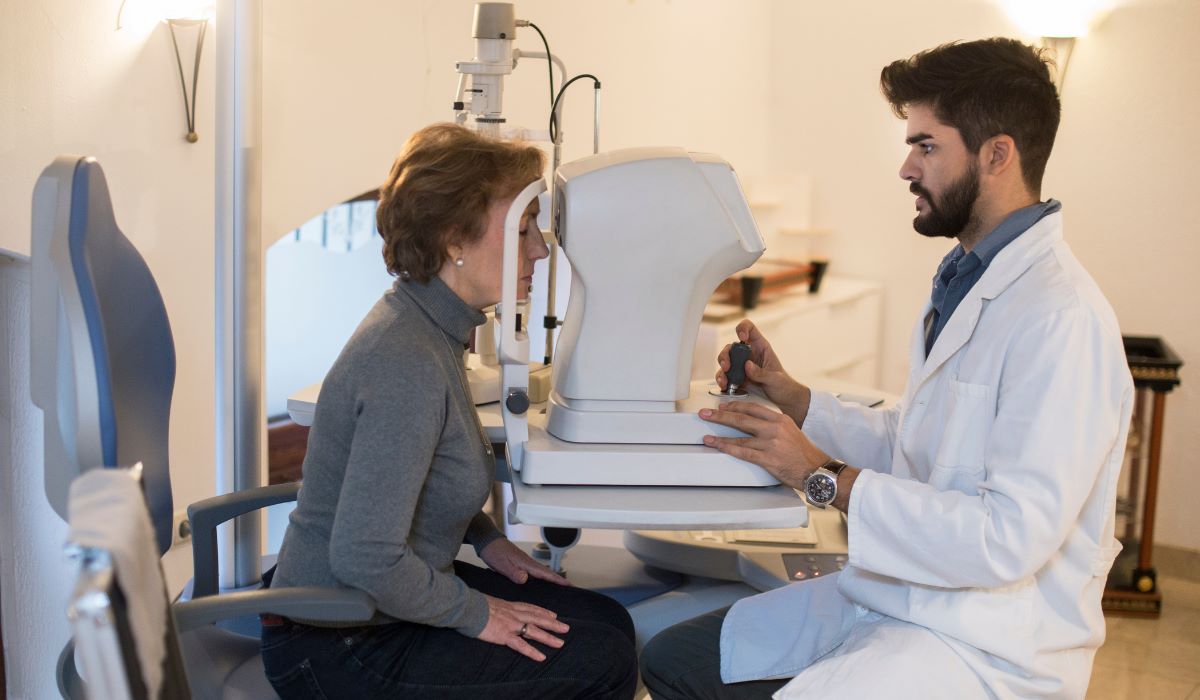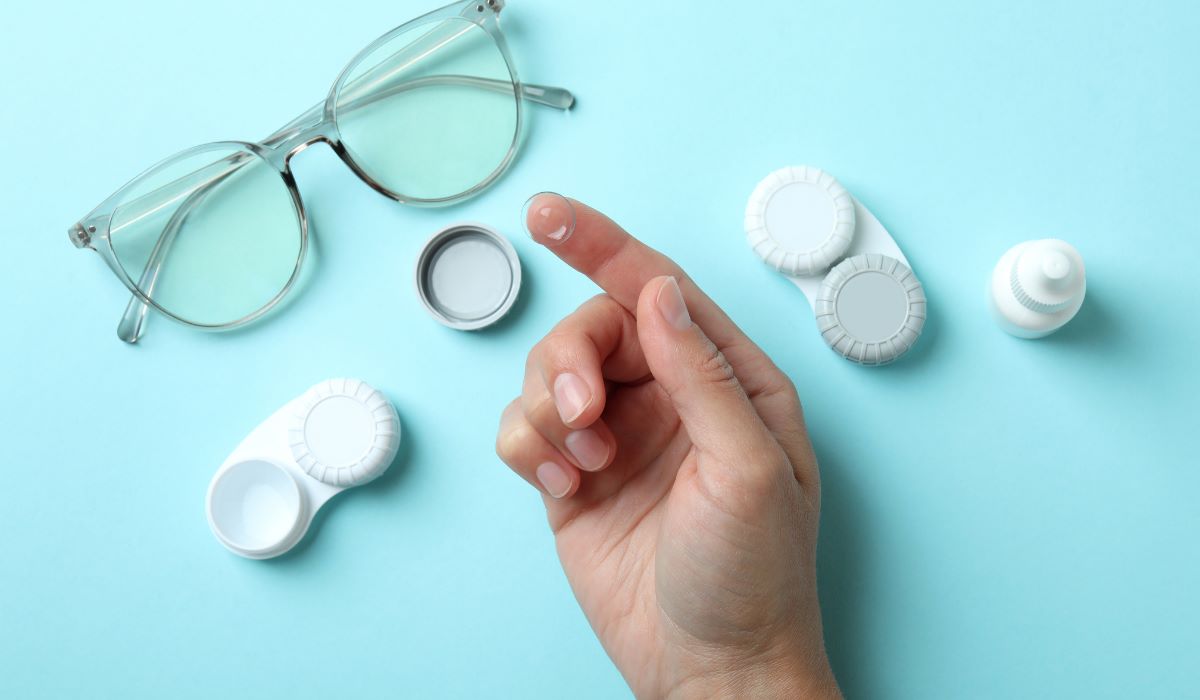What’s the Difference between Contacts and Glasses Prescriptions?
Considering a switch from glasses to contacts and wondering what to expect? Conversely, maybe you’re looking to switch back to glasses from contacts and wonder if you need a different prescription. If you’ve been nodding your head all this time, you’ve come to the right place.
Here, we’ll dive into the key differences between contacts and glasses prescription so you can make an informed decision about which one is the best fit for you.
How do glasses and contacts prescriptions differ?
When it comes to prescriptions, the difference between contact lenses and glasses may seem minor on the surface, but a few centimeters can have a dramatic effect. That’s why you need different tests and prescriptions for each type of vision correction.
Getting a glasses prescription
With glasses, it begins with a comprehensive eye exam. More than a vision test, it’s a way to assess the overall health of your eyes. During the exam, underlying diseases and disorders can be detected, from glaucoma to cataracts to macular degeneration. With early detection, these serious conditions can also be treated early, thus giving you a better prognosis.
By the end, you should get a prescription, or an updated one if it’s not your first rodeo. A glasses prescription is generally slightly stronger than contacts since specs sit 1.2 cm away from your eyes.
Your eyeglass prescription is made up of three different measurements: sphere (SPH), cylinder (CYL), and axis. These numbers allow the optometrist to ensure the right amount of curved lenses is put in your glasses so that you can see at your sharpest and clearest.
Getting a contacts prescription
For contacts, your eye doctor will typically run more tests. They’ll take precise measurements of your eyes, such as the curvature of your cornea and the size of your pupil and iris. After that, there will be a tear film evaluation to see if you have enough moisture in your eyes for contact lenses. You’ll also be advised on the type of lenses that are best for your eyes, depending on whether you have pre-existing conditions like dry eye syndrome.
Once you get your contact lens prescription, you’ll see more information about your eyes, such as shape and size, because the eyewear is placed directly on your eye. The power or sphere (SPH) of the required lenses will still be indicated, but the numbers will most likely be different from the ones found on your glasses prescription.
That’s not all. There will also be other things such as the base curve (BC) and diameter (DIA). Your natural corneal shape determines the base curve (how curved your contact lens should be). As for DIA, this indicates the overall width of your lens. Both are needed to ensure your contacts are a comfortable and secure fit.
The material and brand of contacts should also be specified. This is an important detail as different materials have different abilities to allow oxygen to pass through the contact lenses to your cornea.
Can a glasses prescription be converted to a contacts prescription?
The short answer is no, and it goes both ways. This may sound confusing, but it all comes down to the incredibly precise measurements used when prescribing either vision correction.
Glasses prescriptions include information regarding the shape of the lens and its position in relation to your eyes. Contact prescriptions, on the other hand, are more tailored to individual facial features. They must consider the curvature of your eye and other measures of how each specific contact should fit into your eye for optimal correction.
Therefore, a direct conversion from glasses prescriptions to contacts prescriptions and vice versa is impossible.
Also, not everyone who wears glasses is suited to wearing contact lenses. Certain pre-existing conditions can make someone ineligible for contacts, such as eyes that don’t produce enough tears, which will result in discomfort and irritation. Eye infections, corneal degeneration, or extra sensitive eyes are other factors that would prevent someone from being comfortable in contacts.
How often should one’s glasses/contacts prescription be updated?
There is no one-size-fits-all answer, but most experts agree that yearly visits to the optometrist are ideal for most ages.
Apart from making sure your prescription is up-to-date, regular eye exams help you detect severe illnesses early on, such as glaucoma, cataracts, and diabetic retinopathy.
So, don’t put off visiting the eye doctor even if you feel like nothing is wrong. Taking care of your vision should always be a priority.
Contacts vs glasses – which are better?
Glasses and contact lenses both correct vision, but they have their own properties that appeal to different groups of people.
Glasses are quick and easy to put on, and offer a panoramic field of vision. You also won’t have to change them as often as contact lenses, which range from dailies to bi-weekly to monthly.
On the other hand, contacts may be considered more convenient because they’re not as easy to lose, and they don’t fog up when you exit a cold environment. Also, contacts don’t make it as cumbersome to do certain activities like playing sports.
Glasses come in a wide variety of frames whereas contacts are usually only visible if the lenses are colored. You can use glasses to easily change up your look, from nerdy to cool, hipster to corporate, everyday to concert, etc. With contacts, the changes are much less subtle, unless you go for the unusual styles, like cat-eye lenses or the ones you see when people wear costumes.
As for lenses, there are many types to choose from, such as single-vision, bifocal, trifocal, and high-index lenses. You can also get lenses with functional coatings, like blue light blocking. These lenses are available for both eyeglasses and contacts.
Generally, contacts come in two general types: hard and soft lenses. Hard lenses may take more time to adjust to, but they have greater durability. Soft lenses provide more flexibility and tend to be more comfortable. One drawback is that they can pose a higher risk of infection if not properly cleaned or regularly changed.
Same purpose, different routes to get there
In summary, all corrective eyewear needs a prescription, but the one you get for your contacts greatly differs from the one for your glasses.
Deciding whether contacts or glasses are right for you is an important decision that requires extensive research. If it all gets overwhelming, simply consult a trusted professional before making a choice.

Written by:
Phoebe Jade













